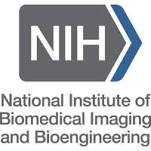Our Research
Our laboratory is specialized in the synthesis of stable triarylmethyl (TAM) radicals used as spin probes for in vivo EPR applications. Our team has developed innovative TAM radicals that enable the measurement of physiological parameters such as pO2, pH, viscosity, enzyme activity or inorganic phosphate (Pi).
Most radicals developed in the laboratory are based on the scaffold of the Finland trityl (FT) and Ox063 radicals and their deuterated analogues for which we have developed efficient large scale synthesis. Those radicals are very attractive for biomedical EPR as they exhibit high stability in biological media, long relaxation times, narrow linewidths and water solubility.
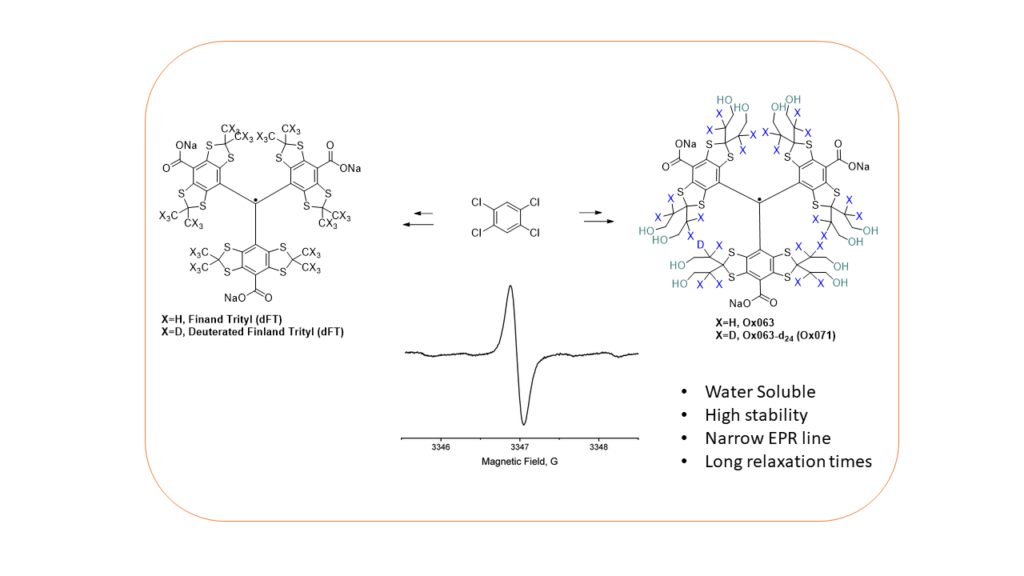
TAM Spin Probes sensitive to oxygen concentration
TAMs with a single line spectrum are ideal spin probes to measure dissolved oxygen concentration by EPR. Indeed, oxygen acts as a relaxing agent shortening both T1 and T2 of the probe. T1, T2 or the EPR linewidth (function of T2) can be calibrated in vitro to the concentration of oxygen. Later when injected in vivo, the measurement of T1, T2 or the linewidth allow to determine the oxygen concentration in the vicinity of the probes. A narrow linewidth leads to higher signal-to-noise ratio and higher oxygen sensitivity. With their narrow linewidths Ox071 (LW = 55 mG), dFT (LW = 32 mG), and trisulfonated dFT (LW = 24 mG) are favorite spin probes for in vivo EPR oximetry. Because of its absence of interaction with albumin, Ox071 can delivered intravenously while dFT and trisulfonated dFT are injected directly into the tissue.
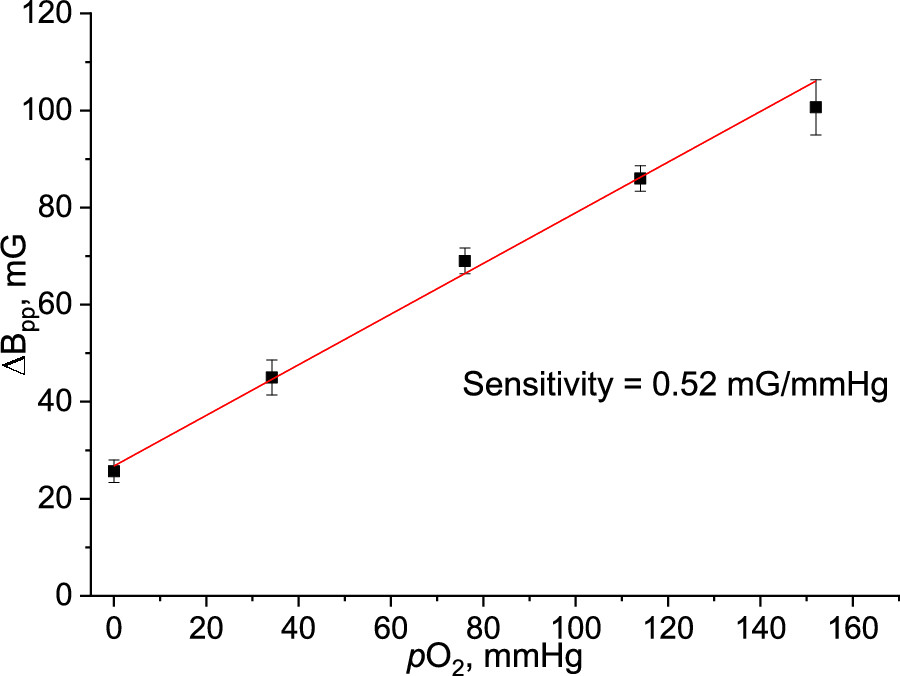
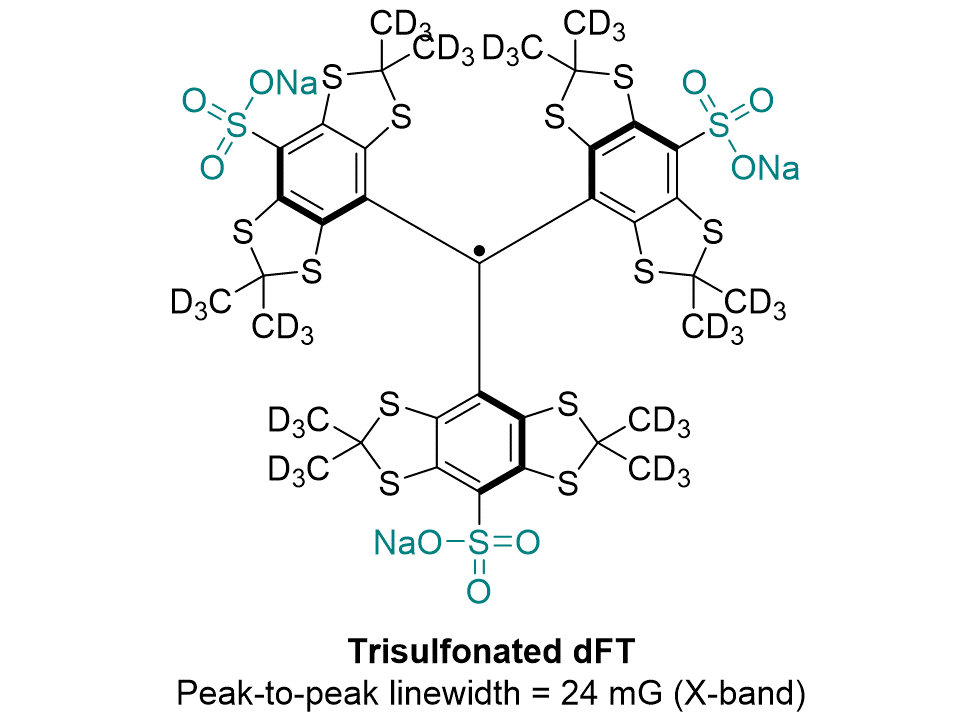
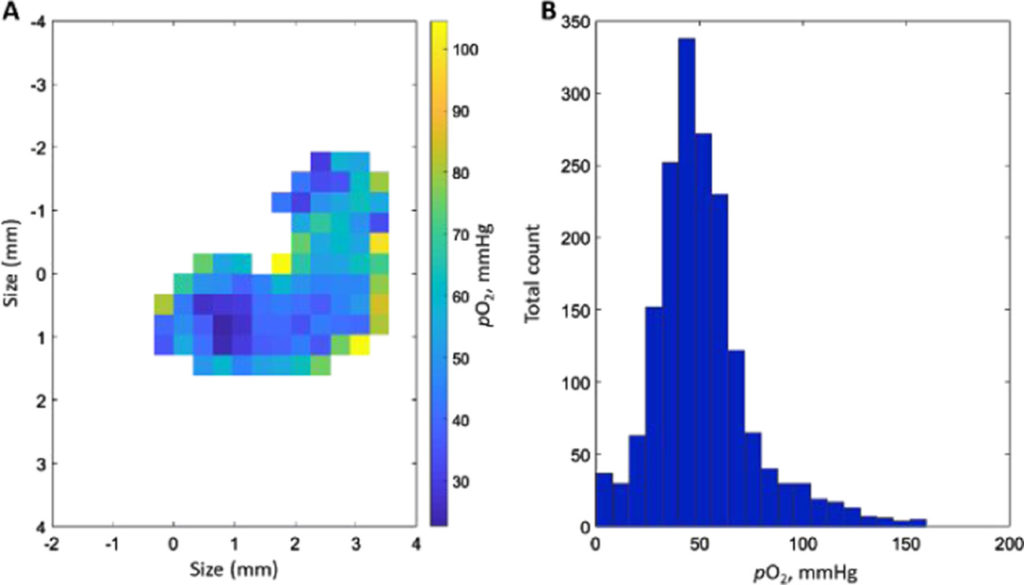
TAM Spin Probe Highly Sensitive to Molecular Tumbling
Because of the small anisotropy of the g tensors and the absence of large hyperfine splitting. The EPR spectra of most TAM radicals are virtually insensitive to molecular motion. We recently reported a method to measure the correlation time of TAM using the anisotropy of the hyperfine splitting of 13C TAMs labeled at the central carbon.
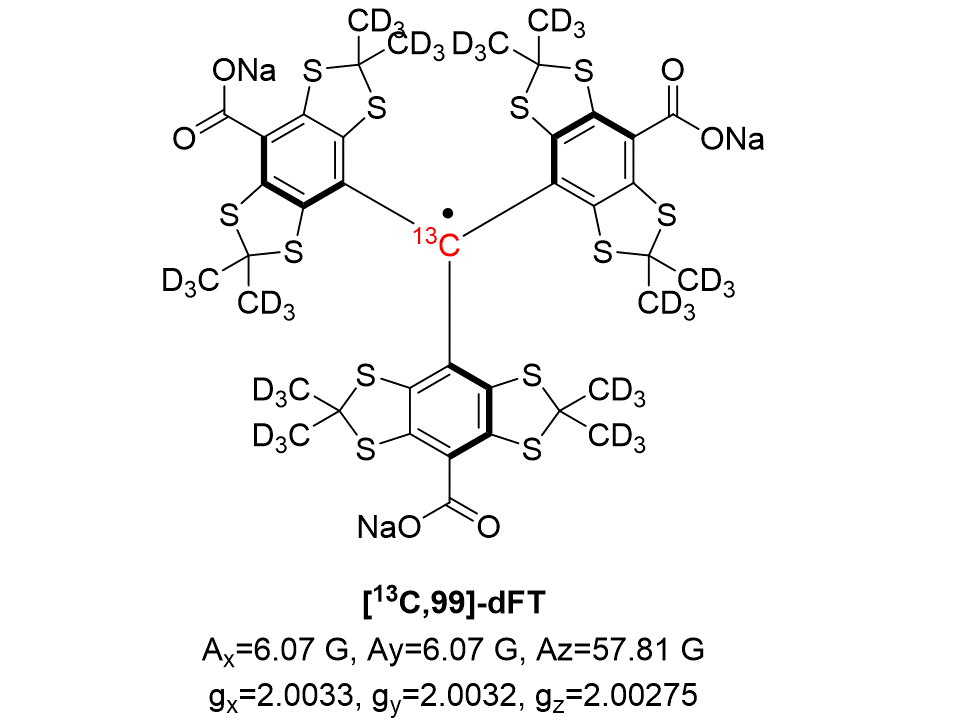
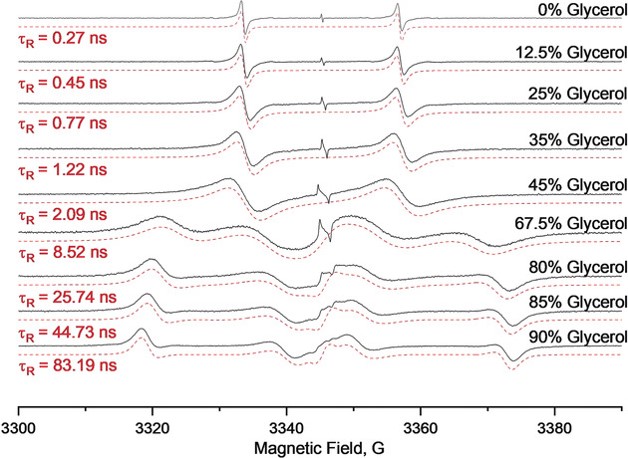
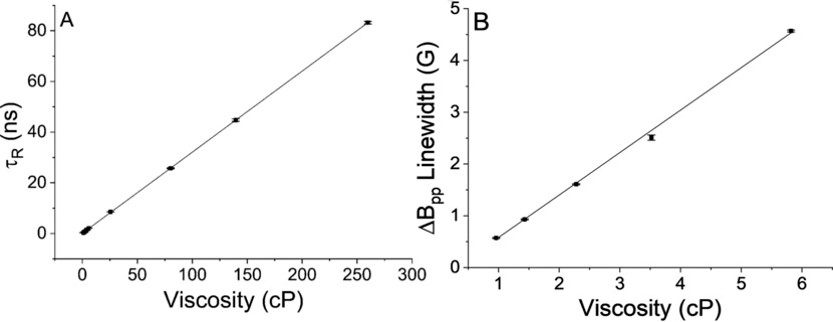
TAM Spin Probe for in vivo reactive oxygen species imaging
To be completed
Organic Radical Contrast Agents (ORCA)
To be completed
Research opportunities
1. Graduate students
Our lab is always looking for talented graduate students. Prospective students are required to apply through the Ph.D. Program in Biomedical Sciences, Health Science Center.
2. PharmD students
We accept every semester one or two PharmD students for the class PHAR749, an early experiential introduction to research. The students are paired with a graduate student, a postdoc or the PI to take on an original research project. Please contact Dr. Galvez and Dr. Driesschaert for more information.
3. Undergraduate students
We accept undergraduate students with Chemistry background willing to commit 10+ hours per week for at least one year. Funding is available in the lab and through various WVU programs. Please contact Dr. Driesschaert for more information.
Collaborations
- Dr. Valery Khramtsov, Dr. Tim Eubank, Dr. Mark Tseytlin (WVU, USA)
- Dr. Hiroshi Hirata (Hokkaido University, Japan)
- Dr. Aharon Blank (Technion, Israel)
- Dr. Sunil Saxena (University of Pittsburgh, USA)
- Drs. Sandra and Gareth Eatons (University of Denver, USA)
- Dr. Josh Biller (TDA Research Inc., USA)
- Dr. Kong Ooi Tan and Dr. Robert Griffin (MIT, USA)
- Dr. Bernard Gallez (Université Catholique de Louvain, Belgium)
Funding
- R01EB032321 (PI: Driesschaert)
- R21EB028553 (PI: Driesschaert)
- R21EB143595 (PI: Driesschaert/Blank)
- R00EB023990 (PI: Driesschaert)
- R01CA192064 (PI: Khramtsov & Eubank)
- R01CA194013 (PI: Khramtsov & Eubank)
